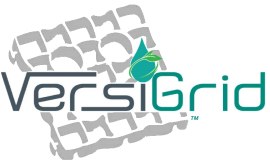VersiGrid™ in stall floors_hoof-healthy and horse-friendly horse stall construction, and how it works
|
a pictoral presentation on typical stall installation for a
plastic grid system....
Your project may vary, and your chosen grid product
installation instructions may be different,
so be sure to take advantage of our free tech support,
and a written prescriptive application to meet your project
conditions and goals!
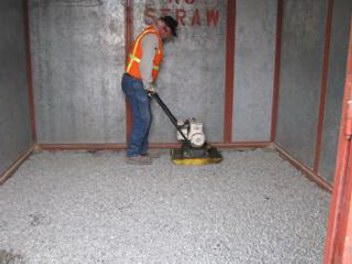 step 1....base layer
|
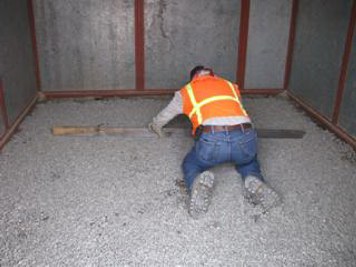 step 2....level the floor
|
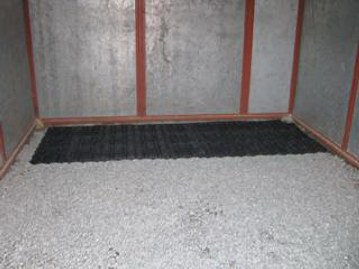 step 3....install the grid
|
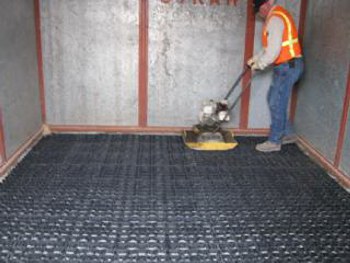 step 4....tamping the grid! step 4....tamping the grid! |
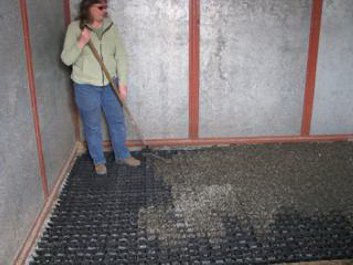 step 5....filling the grid
|
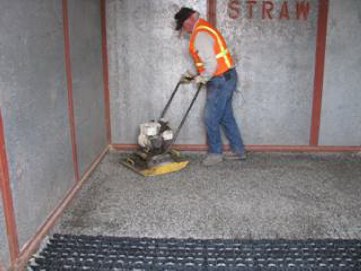 step 6....tamping the p-gravel
|
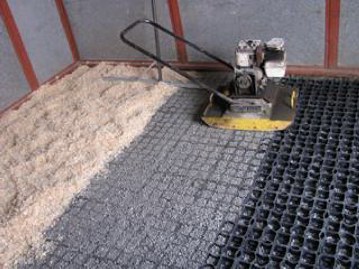 step 8....add the bedding....done!
|
A customer once asked.......
"We have a gravel base already in our stalls, is this good enough as a base?"
This is the reply to the question ...
it will be important to confirm that the "gravel base already in our stalls"
is still draining correctly (pervious and water permeable).
This is really easy to determine
(see Does the soil in the stall floor drain now? below)
|
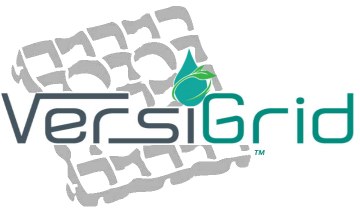 |
You can't just throw VersiGrid™ on top of a clogged "wading pool" of a horse stall or paddock,
and expect VersiGrid™ to magically unclog the soil several inches below the grids.
Reason: It is common practice to put $50 worth of "field lime" or "limestone chips" or "stone dust" or DG (decomposed granite) in the stall floors,
and then compact it to ASTM 95-99 levels (highway roadbase compaction levels).
People do this with the intent of keeping the stall floor level for a few months longer ...
(but even the most docile horse will require frequent medium replacement,
usually at least once per year but usually more often - depending upon the horse and how long it is kept in the stall daily, etc.)
That type of “dirty gravel” - and that type of ground compactions - is never advised or required for VersiGrid™...
... it has the same effect as mixing a bag of dry cement into your gravel stall floor (it sets up, compacts, and doesn't drain).
If the stall floor is not pervious before the VersiGrid™ is installed, then:
1) the grids will still maintain the level stall floors … (one feature of putting VersiGrid™ in stalls),
2) ... but the dirty gravel will hinder the native drainage or "horse-friendly and hoof-healthy" attributes of the system.
Then, the client will say, "What, these grids don't drain at all. And they stink."
It is real important to take a few extra minutes in the ground preparation, to get it right the first time.
Using a poorly draining gravel, or compacting the soil until it becomes impervious, defeats the whole purpose:
... may as well install the VersiGrid™ inside a swimming pool, and wonder why the liquids don't drain.
Perhaps you should follow along with the following "simple drainage test" method below.
Installation for this project should be a minimal "do it yourself"
type of job.
> The only issus: does the soil in that spot of ground currently drain well, or at all?
> You may easily test the drainage:
:_:> Wait until the soil is dry/drained.
:_:> Pour 1" of water into a small hole - approximately 1 foot square x 1 inch deep.
:_:> Come back in two hours.
:_:> There should be no standing water.
If the above is true,
then your installation is simple: just do it one weekend afternoon...
But-If there is still water standing, when you check the drainage ...
(if the soil is clogged, probably due to previous compaction, use of wood products which will clog the earth, or any type of aggregate/gravel which contains pulverized stone, field lime, lime chips, etc),
... then you would need to remove any "clogged earth" - before you install VersiGrid™.
To test the drainge:
> simply carve out several different depths of "holes" in the area. I suggest a 1" depth, 2" depth, 4" depth, etc.
> Then, fill them all up with water.
> Come back in a couple of hours, and check how well the liquid filtered into the horse stall floor.
If you find that the deepest holes have drained, but the shallowest holes have not drained (even though the shallow holes had less water in them),
... THEN that means this area is not draining at all (rather, the saturated soil is slowing evaporating - no rainfall is actually percolating into the clogged earth).
From the test above: you may determine how deeply the "clogged earth" should be removed before installing the grids:
1) if the 1" hole did not drain, but the 2" hole did drain,
... then you must remove the top 1-2" of clogged soil.
2) if the 2" hole did not drain, but the 4" hole did drain,
... then you must remove the top 2-4" of clogged soil.
... and so on.
Once installed on the correctly prepared soil, VersiGrid™ permanently:
Not to mention this is so much healthier for the horse, easier on the stall maintenance - it is also much better for the environment:
VersiGrid™ allows Mother Nature to work the way it worked for centuries, before we recently started the "horse confinement" types of farms and ranches of the last several decades.
Too many hooves striking the same spot of ground,
too often for the small plot of land to recover from naturally ...
Soil compaction and forage kill-off when the land is dry,
Sedimentation/mud and nutrient runoff when it rains ...
That is where the environmental issues (agricultural nonpoint source pollution and nutrient runoff) come from:
confining too many horse on too small an acreage results in the mud and the "nutrient runoff" into the surface waters when it rains, and results in soil compaction when it is dry, killing off the grass and forage when the ground is not saturated. It's just simple science: heavy footprints on small areas creates mud and kills plant when the soil is wet, and compact the soil when it is dry.
VersiGrid™ disperses the footprint over a wide surface area (whether livestock or vehicles), while it prevents the surface from being intermingled with the subsoil.
Ready to find out what it takes for you
to be mud-free also!
We can provide you recommendations,
answer specific questions, and get you a quote including delivery
Give us a call at (425) 864-1701
Or
: all images, descriptions, text, or other media ...
VersiGrid™ ~ All rights reserved. ~
May be reprinted by the clients, partners and customers
This copyright information must remain on all copies, whether digital, print and/or hardcopy, broadcast, video, graphical images or any other media. ||
(425) 864-1701 || www.versigrid.biz
|
|
 |
 |
